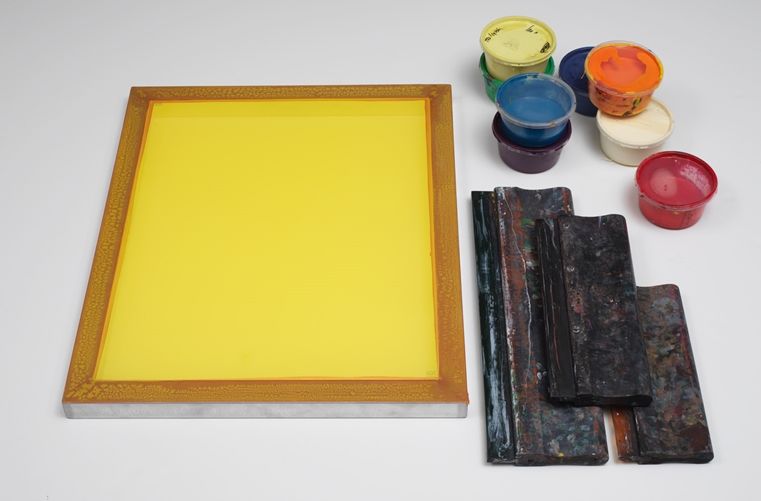ChatGPT said: What customers are saying in 10:9 Design reviews: real experiences
Wiki Article
The Important Guide to Comprehending Screen Printing and Its Versatile Makes use of
Screen printing has a rich history that goes back to old times, advancing right into a sophisticated method utilized across numerous industries today. This overview explores the intricacies of the screen printing procedure, detailing its applications in home, advertising and marketing, and fashion design - 10:9 Design LLC Company. Understanding these basics can open up innovative possibility for both creative and industrial projects. The following areas will disclose vital ideas and techniques to enhance one's screen printing undertakingsThe Background of Screen Printing
Screen printing has roots that map back centuries, its advancement mirrors the creative and technical innovations of numerous cultures. Coming from old China, the strategy was initially used for embellishing fabrics and later spread to Japan, where it ended up being integral to Ukiyo-e woodblock printing. The technique changed to Europe in the 18th century, where it obtained popularity amongst artisans and business printers. The invention of photo solution in the 20th century revolutionized screen printing, permitting more complex styles and greater efficiency. Musicians like Andy Warhol further propelled its popularity, making use of the tool to produce famous jobs that mixed commercialism and fine art. By the late 20th century, screen printing had established itself as a versatile method, employed in fashion, marketing, and fine art. Today, it remains to advance, integrating electronic innovation and broadening its applications across various markets.The Screen Printing Process Explained
Screen printing transforms artistic visions right into tangible styles via a collection of specific steps. Initially, an image is developed and then transferred onto a screen, normally constructed from great mesh textile extended over a structure. A light-sensitive solution is related to the screen, which is subjected to light, hardening in areas not covered by the image. After rinsing the unhardened emulsion, a stencil is formed.Next, the screen is placed over the substrate, whether it be fabric, paper, or one more product. Ink is after that pushed through the open areas of the pattern using a squeegee, depositing the style onto the substratum below. This procedure can be repeated for numerous shades, calling for separate screens for each hue. The published thing is treated utilizing warmth to guarantee the ink adheres properly, resulting in a long lasting, vibrant style prepared for use.
Types of Screen Printing Techniques

Additionally, specialty techniques, such as discharge screen printing, get rid of color from the material to produce softer prints, while aluminum foil screen printing uses metal foil to attain a shiny finish (10:9 Design Company). Each method uses distinctive qualities, satisfying numerous imaginative needs and production ranges, ultimately increasing the possibilities within the screen printing domain
Applications of Screen Printing in Different Industries

Additionally, the signs and advertising fields use screen printing for producing attractive display screens and banners. This approach permits vibrant colors and elaborate styles that capture attention. In electronic devices, screen printing is used for using conductive inks to circuit card, essential for component connections. In addition, the home décor sector accepts screen printing to create unique designs on fabrics and wall art. On the whole, screen printing functions as an essential device throughout diverse fields, boosting items with individualized and aesthetically attractive graphics.
Tips for Successful Screen Printing Projects
While carrying out a screen printing job, cautious focus to information can considerably enhance the last outcome. Selecting top notch products is essential; this includes the screen, inks, and substrates. Using proper mesh matters can influence ink deposition and information resolution. Prep work is similarly vital; comprehensive cleaning of screens and correct direct exposure times assure crisp prints.Next, precise registration is important for multi-color prints. Utilizing alignment tools can help attain exact layering. In addition, testing prints on scrap products before manufacturing assists determine prospective concerns without losing sources.

Frequently Asked Questions
What Materials Are Best for Screen Printing on Material?
Cotton and polyester blends are perfect for screen printing on fabric due to their longevity and ink absorption. In addition, specialized fabrics like silk or canvas can produce one-of-a-kind structures and finishes, improving the total design high quality.How Do I Tidy and Maintain Screen Printing Equipment?
To clean up and preserve screen printing equipment, one ought to routinely wash displays with ideal solvents, inspect mops for wear, lubricate moving parts, and store all products in a dry, dust-free environment to lengthen their life-span.What Are the Environmental Effects of Screen Printing?
Screen printing can have considerable ecological effects, consisting of chemical waste from inks and solvents, water usage throughout cleansing procedures, and energy consumption. Lasting practices and environment-friendly materials are crucial for reducing these unfavorable results.Can Screen Printing Be Done in the house Effectively?
Screen printing can be properly done at home with the appropriate materials and strategies. Hobbyists can produce quality prints, though success depends upon their ability degree, equipment, and understanding of the process entailed.
What Are the Costs Connected With Beginning a Screen Printing Business?

Starting a screen printing service includes costs for tools, products, and work space. Preliminary expenditures normally range from a few hundred to numerous thousand dollars, depending on the scale, quality of machinery, and desired production ability.
Screen printing has an abundant history that dates back to old times, progressing into a sophisticated strategy utilized across numerous markets today. Another technique, rotating screen printing, utilizes cylindrical screens, assisting in continual printing on material rolls, thereby improving effectiveness for large-scale manufacturings. Furthermore, specialized techniques, such as discharge screen printing, get rid of dye from the material to develop softer prints, while aluminum foil screen printing uses metal aluminum foil to achieve a shiny finish. In the fashion industry, screen printing is extensively utilized to create lively designs on clothing, enabling brand names to showcase their special styles. Cotton and polyester blends are excellent for screen printing on fabric due to their durability and ink absorption.
Report this wiki page